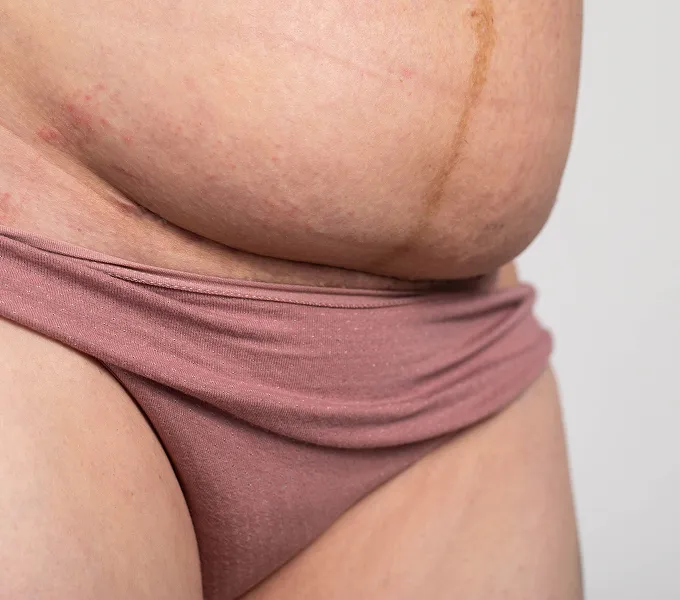
Finding Comfort & Connection: A Complete Guide to Breastfeeding/Chestfeeding Positions
This article was written in partnership with The Lactation Network. Clinically reviewed by Liz Miracle, PT, MSPT, WCS
Breastfeeding/chestfeeding can be a powerful bonding experience between you and your baby. But let’s be honest: It can also feel awkward and uncomfortable, especially if you're still figuring out positioning. The right hold can make nursing more comfortable, support a deep latch, and help prevent problems like nipple pain, sore back and arms, and clogged ducts. Learning a few foundational techniques can make all the difference.
So how do you find your ideal position? Start with some of the best practices below — just know they’re not always intuitive. They often take a little trial-and-error and practice, but you don’t have to do it alone. An International Board Certified Lactation Consultant (IBCLC) can guide you on each technique and help you find the ones that work best for you and your baby.
Latching fundamentals (Apply these in every position)

Physical therapy tips for comfortable breastfeeding
These additional tips from Origin's physical therapists can help you maintain good posture and prevent discomfort during feeding sessions.
- Support your body: "Use lumbar support and pillows under your arms and elbows to keep them aligned in a comfortable position. This will help you sit in a more ergonomic position, reducing lower back pressure and maintaining proper posture." - Dr. Jennifer Carr, PT, DPT, OCS, PRPC
- Limit time gazing down: "Try to avoid being on your phone or looking down at your baby for extended periods to prevent extra strain on your neck. Position yourself so you can look at your baby with minimal neck flexion, and take breaks to look straight ahead or gently stretch your neck during longer feeding sessions." - Dr. Leigh Welsh, PT, DPT
Classic breastfeeding positions explained
Once these basics are in place, experiment with the classic positions below to see what feels best for you and your baby. Switch them up as often as you like — comfort and a good latch is what counts!
1. Cradle Hold
Description: The traditional position most people picture. Your baby lies horizontally across your front, supported by the arm on the same side as the nursing breast.
- Best for: Older babies with solid head control; established latchers.
- Benefits: Familiar, promotes eye contact, easy skin-to-skin.
- Note: Not for newborns, small babies, or babies who cannot self-attach and stay aligned well with their nose across from the nipple.
2. Cross-Cradle Hold
Description: Baby still horizontal, but you support them with the opposite arm (left arm supports baby at right breast). Your free hand shapes the breast (C- or U-hold) to guide the latch.
- Best for: Newborns, small or preterm babies, anyone learning to latch.
- Benefits: Maximum control of baby’s head and view of latch.
- Note: Depending on breast shape and size as well as delivery type and comfort, some parents find this hold a bit difficult to master. Have your IBCLC work with you on body position, your support underneath baby, and the best way to sit for this position.
3. Football (Clutch) Hold
Description: Sit upright, tuck baby along the side of your body — feet and legs under your arm like a football — while supporting their neck and shoulders with the hand on the same side as the nursing breast. Use pillows under your baby and under your forearm so their nose lines up with your nipple without leaning forward. For this position your baby will have their tummy turned into your rib cage on the side of your body. Be sure to maintain the open space between your baby’s chin and chest.
- Best for: Parents recovering from C-sections (keeps pressure off incision), large-breasted parents, twins (one on each side).
- Benefits: May offer better view of latch, keeps baby off abdomen, can be good for small or sleepy newborns.
- Note: Some babies will push off the back of the chair or bed. If you keep their legs bent, it can help prevent that and keep them aligned.
4. Side-Lying Position
Description: Both of you lie on your sides, tummy to tummy. Use the hand you’re not lying on to guide the breast if needed.
- Best for: Night feeds, recovery after birth, anyone needing rest.
- Benefits: Allows the parent to rest, comfortable after surgical birth. Safety tip: If you might sleep afterward, clear loose bedding, use a firm surface, and ensure no medications or others are sleeping in the bed. Have an awake partner that can monitor you both and ensure your baby’s safety.
- Note: This position may take practice and extra support behind the nursing parent. Keep trying until you find the most comfortable position for you. Practice this position during the day to master it for sleepy nighttime feeds.
5. Laid-Back (Biological Nurturing) Position
Description: Recline at a comfortable angle on a couch or bed, baby on their belly on your chest. Gravity helps your baby use innate rooting reflexes to find the breast and aids in a wide open mouth on the breast.
- Best for: Newborns, overactive let-down, shallow latch correction.
- Benefits: Encourages instinctive latch, often reduces nipple pain, relaxing for mom and baby
- Note: Have your IBCLC or hospital staff support your initiation of this position if you find it awkward.
6. Koala (Upright/Straddle) Hold
Description: Baby sits upright on your thigh or hip, straddling your body while latching.
- Best for: Older babies with good head control, reflux, ear infections, or fast let-down.
- Benefits: Aids digestion, keeps milk from flowing too fast into their throat.
- Note: Depending on your breast size and sitting position, you may need additional support under your baby or the breast.
Breastfeeding tips for ongoing success
- Bring baby to your breast, not breast to baby – it’s safer for your back and neck comfort and helps keep baby deeply latched.
- Use supportive pillows to lift your baby to nipple height.
- Watch for signs of a good latch: Wide mouth, flanged lips, more areola visible above top lip than below, rhythmic suck-swallow, no pinching sensation on your nipple.
- Change positions/relatch if you feel pain after the first few seconds or see cheeks dimpling.
- Seek expert help early: An International Board Certified Lactation Consultant (IBCLC) can troubleshoot positions, latch, and milk transfer. Insurance-covered virtual or in-person consults are often available (e.g., via The Lactation Network).
Final thoughts
Comfort, connection, and confidence grow with practice. Whether you’re reclining with your newborn or sitting upright with your toddler, any position that keeps latch fundamentals intact and feels good for both of you is the “right” one. Enjoy the journey — and reach out for help as soon as something doesn’t feel right. You and your baby deserve a peaceful, comfortable breastfeeding experience.
Sources Cited
- Cleveland Clinic. (2023). 6 Breastfeeding Positions That Can Help You Nurse Successfully. https://health.clevelandclinic.org/breastfeeding-positions
- Mayo Clinic. (2023). Breast-feeding: Tips for success. https://www.mayoclinic.org/healthy-lifestyle/infant-and-toddler-health/in-depth/breast-feeding/art-20546815
- Parents. (2023). How to Breastfeed Lying Down. https://www.parents.com/baby/breastfeeding/tips/side-lying-breastfeeding-position-8670908
- Verywell Family. (2023a). How to Use the Cross-Cradle Breastfeeding Position. https://www.verywellfamily.com/latching-baby-in-cross-cradle-position-431709
- Verywell Family. (2023b). What Is Biological Nurturing in Breastfeeding? https://www.verywellfamily.com/what-is-biological-nurturing-431622




